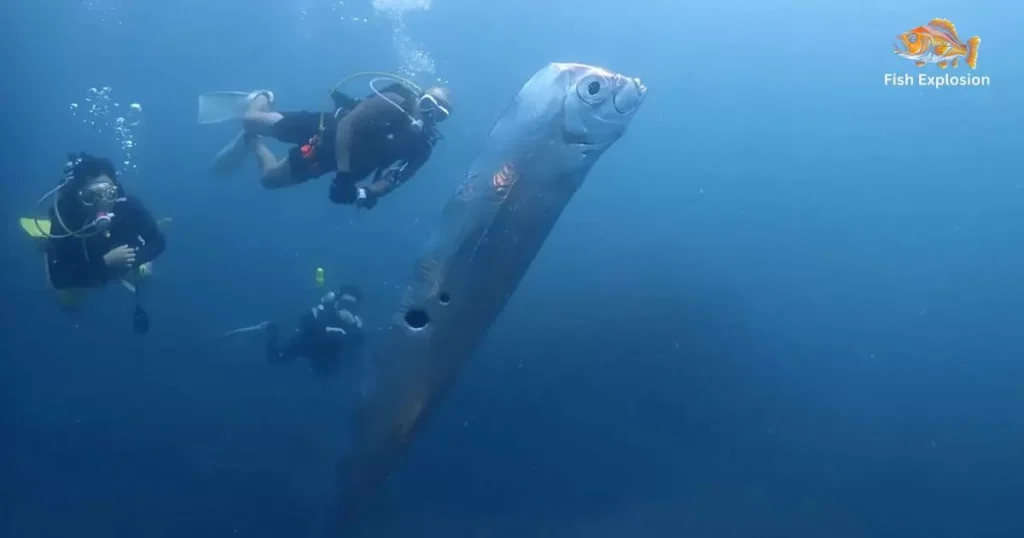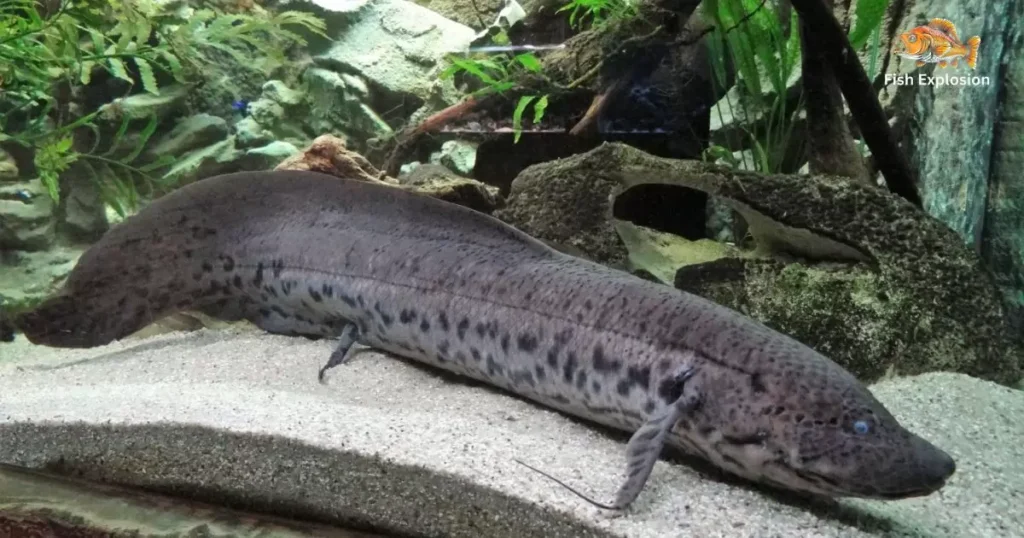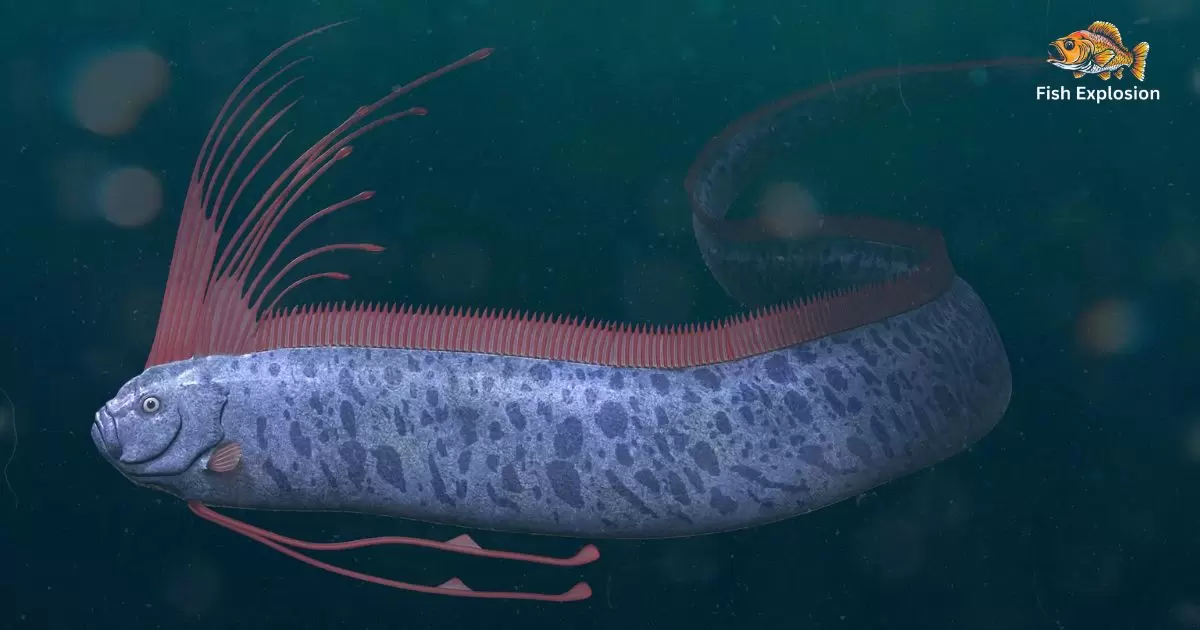The lungfish, also known as the “Doomsday Fish”, is an old and strange species of fish that are often referred to as “living fossils” or “fossil fish.”
Lungfish have survived for over 350 million years with little to no evolutionary changes, making them a unique example of a species that has changed very little since the beginning of time. As one of the oldest living fish species that first developed during the Devonian time, lungfish are considered “living links” to this ancient geological age.
Their ability to survive enormous environmental modifications over millions of years through adaptations like having basic lungs and surviving on land has earned them nicknames like “living fossils”. Because lungfish survive today largely unaltered from their primordial ancestors, they provide scientists with a unique window into the prehistoric past.
What are the doomsday fish?

Doomsday fish are small varieties of fish that are able to survive extreme environmental conditions. These fish live in places that experience prolonged droughts or high levels of toxic pollution.
They have unique biological adaptations that allow them to go without food or oxygen for months at a time. Scientists study doomsday fish to better understand animal survival in harsh climates. Their ability to withstand difficult environments could provide insight into preserving other species.
Read More: “What Are The Most Common Freshwater Fish To Catch?”
Examples of Doomsday Fish
Here are the following examples of Doomsday Fish:
Coelacanth
The Coelacanth is an endangered species of fish that lives in the oceans around Indonesia and East Africa. It was thought to have gone extinct along with the dinosaurs over 65 million years ago until one was rediscovered off the coast of South Africa in 1938. This came as a major surprise to scientists as they believed Coelacanths had been extinct for so long.
Further research has found more populations of these prehistoric-looking fish still living in the deep waters off the coasts. Thought extinct for 65 million years until rediscovered in 1938, the Coelacanth challenges what we know about extinction.
Sturgeon
The sturgeon is an ancient fish species that can be found in rivers and lakes around the world. It is known for its armor-like protective scutes and long snout.
The sturgeon species dates back over 200 million years to the Triassic period, making it one of the oldest fish still in existence today. Sturgeons have survived for so long due to their adapted armor and ability to live in both fresh and saltwater.
Gar
The gar is a primitive fish species that has existed for over 100 million years. Belonging to the group of fish tracing back over 100 million years, gar has changed little evolutionarily with their long needle-like teeth and scales resembling armor.
As one of the oldest surviving fish, gar predates many other species and has few natural predators despite their presence across much of North America. Their longevity speaks to their ability to adapt while retaining defining anatomical features.
Lungfish

Lungfish are a peculiar ancient species of fish that can breathe both water and air. Capable of extracting oxygen from the air, lungfish have developed primitive lungs that allow them to leave the water and survived multiple mass extinctions that wiped out many other species.
This unique ability to breathe air in addition to water through the lungs sets lungfish apart from all other fish and has allowed the species to prosper for over 350 million years. Their physiology enabling them to breathe air in addition to water through their lungs has helped lungfish persist while many other species went extinct.
Horseshoe Crab
The Horseshoe Crab is a marine creature found in coastal waters. Not a fish but a “living fossil” arthropod over 450 million years old, the Horseshoe Crab has survived for hundreds of millions of years relatively unchanged. With their distinctive horseshoe-shaped carapace and long, spiny tail, they are easily recognized. Horseshoe Crabs play an important role in the food chain of coastal ecosystems.
Characteristics of Doomsday Fish
- Relatively unchanged biology over vast timescales.
- The bony skeleton that is often filleted.
- Fleshy lobed fins.
- Occupies similar marine habitats as ancient ancestors.
- Incredibly slow metabolic rate.
- Incredibly slow reproductive cycle.
- Biology has remained largely unchanged over time.
- Possesses a bony skeleton that is commonly filleted.
- The body features fleshy lobed fins.
- Likely inhabits environments close to those of prehistoric ancestors.
Significance
Sharks have significant importance from an evolutionary perspective as they provide insights into evolution and life in prehistoric times.
Sharks have existed for over 420 million years, surviving five mass extinction events when most other lifeforms died out.
Their longevity and resilience against mass extinctions and environmental changes make sharks considered evolutionary marvels. Despite their ancient origins, modern sharks remain remarkably similar to their ancestors that existed tens if not hundreds of millions of years ago.
Their persistence and survival through multiple catastrophic periods in Earth’s history demonstrate sharks’ resilience against mass extinctions and profound environmental changes. Overall, the long history of sharks significantly aids our understanding of early life on Earth and evolution over hundreds of millions of years.
Conservation Status
The conservation status of many doomsday fish species remains a serious concern. Many doomsday fish species are threatened or endangered today as their ancient lineages are vulnerable to a multitude of pressures from human activities. Overfishing has decreased populations of some species substantially while habitat loss and pollution threaten critical habitats.
These doomsday fish evolved over hundreds of millions of years but are extremely vulnerable today due to these risks. Conservation efforts aim to protect these ancient lineages and species from extinction by reducing overfishing, preserving remaining habitats, and minimizing pollution.
Efforts include catch limits, no-take marine reserves, habitat restoration, and water quality improvement. If successful, these attempts hope to stabilize vulnerable populations and safeguard the future of doomsday fish and their extraordinary evolutionary legacy.
FAQ’s
What is the fish in Japan warning?
Oarfish sightings were seen as a warning for the 2011 Tōhoku earthquake and tsunami.
What fish was caught before the earthquake in Taiwan?
Several oarfish were caught by fishermen before the September 1999 Jiji earthquake in Taiwan.
Has anyone eaten oarfish?
While oarfish are not frequently eaten, some do consume them in certain regions like Taiwan and parts of Japan, though they are not common seafood.
Conclusion
Doomsday fish have shown an incredible ability to survive catastrophic environmental changes over hundreds of millions of years, persisting through multiple mass extinction events that wiped out most other species. Their unique biological adaptations allow them to withstand long periods without food or oxygen. However, these ancient lineages that evolutionarily changed little over eons are now highly vulnerable to modern human pressures.
Overfishing, habitat loss, and pollution seriously threaten doomsday fish populations globally. While they survived asteroid impacts and climate shifts, many species face extinction within centuries if conservation efforts are not successful. Protecting the last remnants of these living fossils is imperative to preserve unique windows into early evolution on Earth. Further research on doomsday fish may also provide valuable insights for safeguarding biodiversity in the future.
With three years of dedicated expertise in the niche of fish, my domain knowledge encompasses breeding, habitat maintenance, health management, and sustainable aquaculture practices, ensuring optimal outcomes in the aquatic realm.











